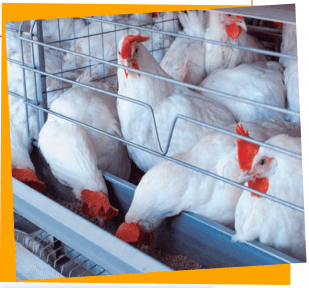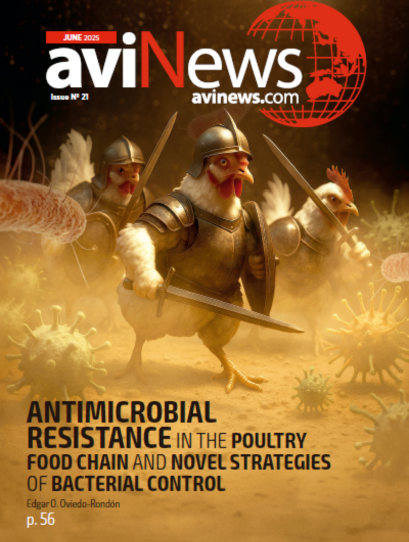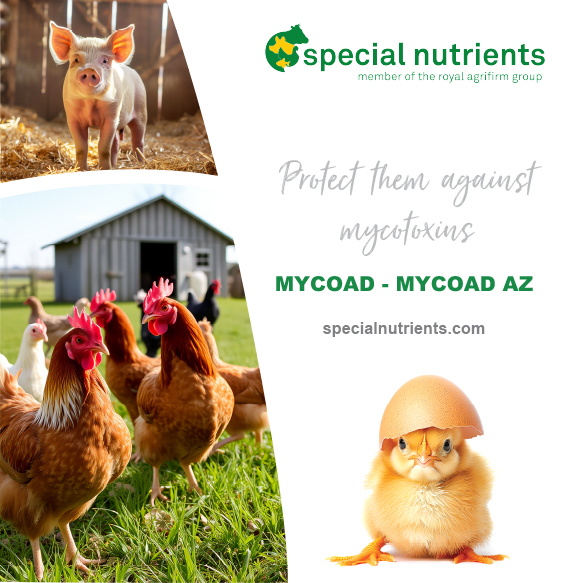Content available at: Español (Spanish)
Heat stress is one of the most important causes of economic losses of companies in the poultry sector in tropical climates and has a great impact on productivity and mortality.
In normal environmental conditions, birds maintain their balance with the environment, however, by altering the temperature, birds will have to compensate for these variations above or below their thermal comfort zone.
Heat stress begins when the ambient temperature rises from 26.7 ° C and potentializes above 29.4 ° C.
When the birds begin to pant, physiological changes have already begun in the body to dissipate excess heat; before the birds reach this point, anything that can be done to help the birds stay comfortable will help keep growth, hatchability, egg size, shell quality, and production in peak condition.
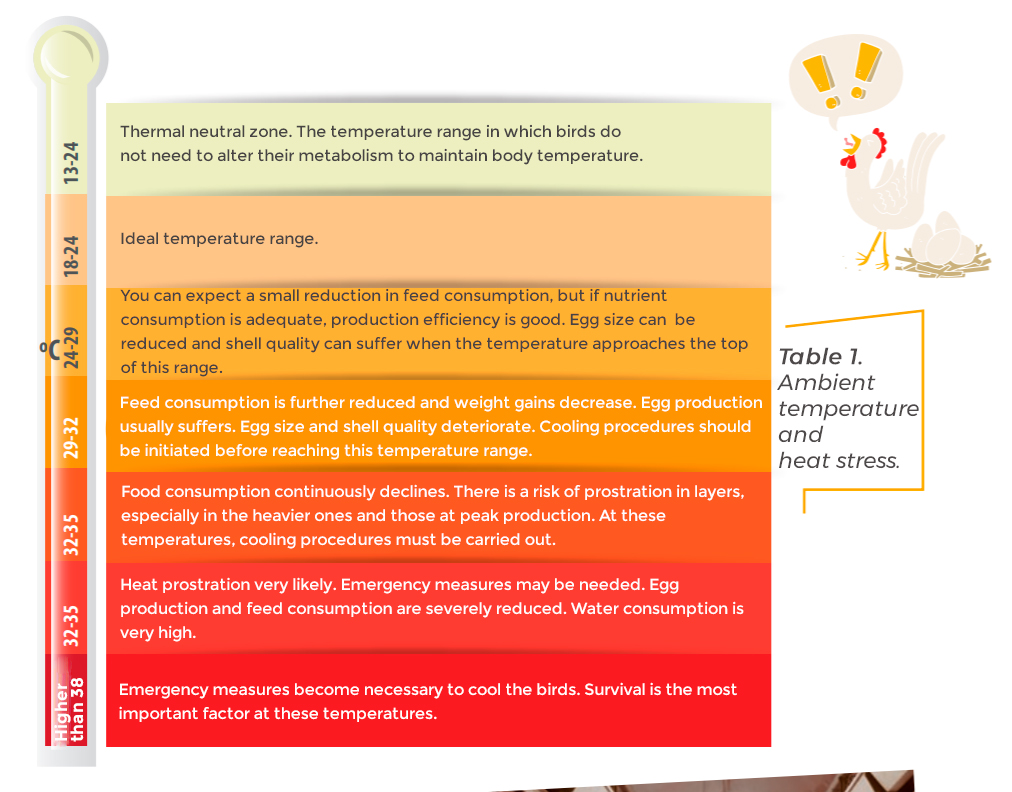
Table 1. Expresses the different physiological events in birds as the environmental temperature varies.
The ideal range of ambient temperature for birds is between 18 and 24 ° C and the neutral between 13 and 24 ° C; Temperatures above or below will force birds to turn on their thermoregulation mechanism to compensate for these variations.
Birds are very sensitive to heat outbreaks, and cannot endure extreme temperatures for long; this is because they cannot sweat as they don’t have sweat glands. Additionally, they are covered with feathers, making it difficult for them to dissipate the heat that is generated inside their body and that which comes from outside.
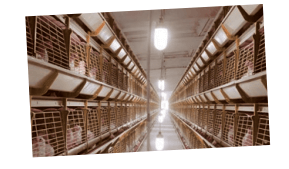
Layers can suffer more than other birds, since most of the facilities on today’s farms are automatic or generally housed in cages.
Chickens in cages are totally dependent on the proper functioning of ventilation equipment to dissipate heat from their bodies.
With genetic changes, and types of facilities and cages, chickens have lost resistance to extreme heat.
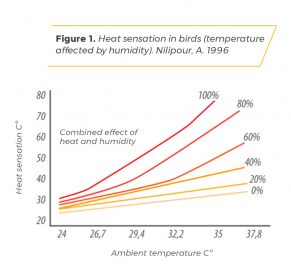
As the bird’s body temperature increases, feed consumption, growth, feeding efficiency, viability, and quality of the eggshell decrease; This is particularly severe when the ambient temperature rises extremely, since the possibility of losing heat by non-evaporative means (loss of heat through the skin) is significantly reduced.
Adult birds resist cold much better than heat, as their internal temperature can drop to 23.9 ° C and still survive.
The combination of heat with humidity can be deadly; this sum must not exceed 106.7 when expressed in °C.
For example, when the temperature is 26.7 ° C, and the RH is 80%, or 26.7 + 80 = 106.7, heat stress begins.
It is very important to know how to manage these factors, i.e: when there is a lot of humidity in tropical areas:
At midnight: More ventilation must be provided and wet walls, humidifiers and sprinklers must be avoided.
At noon when there is less humidity and more heat: ventilation should be used as much as possible combined with sprinklers, humidifiers and wet walls.
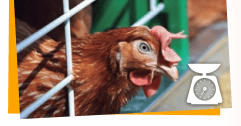
When birds are exposed to high temperatures, body heat is increased by the combination of high external temperatures and the energy associated with activating the metabolic process required for the dissipation of body heat. this heat dissipation is increased by the position the bird must adopt to increase the vascular surface area by vasodilation, causing an increase in water consumption and an acceleration in the respiratory rate. This respiratory acceleration in birds is particularly important since water evaporation becomes a means of heat dissipation; unfortunately, this evaporative cooling only succeeds in reducing the body heat by a small proportion.
The birds’ comfort zone decreases as they age and grow.
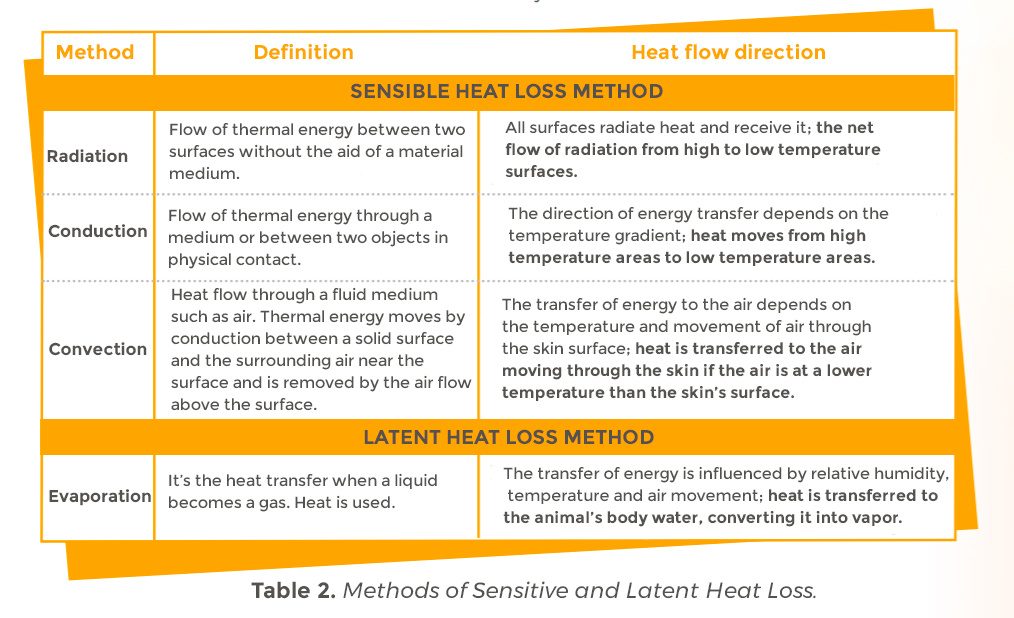
Heavier breeds tend to have more problems with heat stress since they have less surface area to dissipate heat per unit weight; Another variable that influences susceptibility to heat stress is the birds’ previous exposure to this stress.
In warm months, temperatures can rise to 35 ° C and 38 ° C it is critical that birds dissipate body heat into the environment; As we mentioned above, birds don’t sweat, so they must dissipate heat in other ways to keep body temperature around 40 ° C to 41 ° C., body heat is dissipated to the environment through radiation, conduction, convection and evaporation (see Table 2) .
The first three routes are known as sensible heat loss, these methods are effective when the ambient temperature is below or within the birds’ thermal neutral zone (13 ° C to 24 ° C) (see Table 1). The proportion of heat lost through radiation, conduction and convection depends on the difference in temperatures between the bird and the environment.
Birds lose temperature on surfaces such as legs and feathered areas under the wings.
The purpose of ventilation in poultry houses is to maintain a high enough air velocity or a low enough temperature in the house so that birds can maintain body temperature by sensible heat loss methods. (see Table 2)
Once the ambient temperature rises to 25 ° C, the method of heat loss begins to change from sensible (radiation, conduction or convection) to evaporation or latent.
The dissipation of body heat by evaporation requires an expenditure of energy from panting (hyperventilation), which begins to occur at a temperature of approximately 26.5 ° C .; gasping is to breathe rapidly with the mouth open to cool down through evaporation; This is a normal reaction for birds that want to survive the heat stress.
Chickens in their normal state and in a thermo-neutral environment, breathe 25 times per minute, however, when the temperature passes its limit , this rate can reach to 250 times per minute and the birds eventually may perish.
Panting removes heat by evaporation of water from the moisture in the respiratory tract, however, this also generates body heat and causes removal of water from the birds’ bodies.
Layers affected by heat stress lay very thin shell eggs due to the acid-base imbalance of the blood which results in them beginning to gasp (hyperventilate).
As birds gasp, they lose excess CO2 gas from their lungs. It is important to understand that, due to hyperventilation and panting, the layer loses a large amount of bicarbonate ions (HCO3)-1 that should become part of the shell as calcium carbonate crystals, this is one of the reasons why it is recommended at this time to replace at least 30% of the added salt with sodium bicarbonate or at least to add supplements in the water that contain bicarbonate ions that improves the electrolytic balance of the birds .
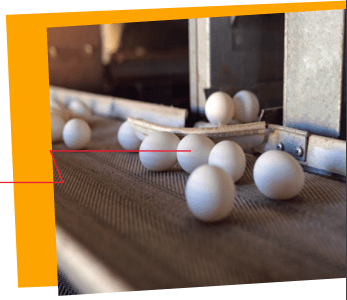
When the amount of CO2 falls in the blood, it causes the pH of the blood to rise or become more alkaline. The higher the blood pH, the lower the amount of ionic calcium (Ca+2) in the blood.
Ionic calcium is the calcium used by the gland that produces the eggshell. Even if the amount of calcium in the diet is increased, this problem cannot be corrected.
When feed consumption decreases due to heat stress, calcium and phosphorous intake also decreases, contributing to the production of fragile shells.
As the pH of body fluids changes, feed consumption becomes more depressed causing an adverse effect on the bird’s growth, production and overall performance .
Normally, the heaviest and largest birds with the best conformation are those that die, since they have an excellent production rate and a higher weight that causes more stress. Most of the birds that suffer from heat strokes die at night; that is to say that the birds suffer during the day, cannot dissipate the heat and like a sponge they absorb all the heat and die at night.
The effects of heat stroke or heat stress can be diminished by applying a comprehensive plan that can improve the conditions of the birds to deal with this event.
The strategy should include:
- A complete biosecurity plan
- A management plan for ventilation and water management in terms of quality and temperature
- An adequate diet and nutrition plan
The availability, quality and temperature of the water is important.
The only way that hens can maintain their high production rate in hot weather is by facilitating the dissipation of body heat while still receiving their daily nutritional requirement during the cooler hours of the day, when it is easier to lose extra calories through digestion. This can be done by applying temporary fasting, as eating in the hottest hours of the day can be deadly; Digesting feed at these times generates heat in the birds, further aggravating the situation; this means that the feeders should be empty 1-2 hours before the heat and 1 hour after; it can be supplemented with a midnight feeding plan which can help maintain production at any age of the hens and does not interfere with their sexual maturity; it also improves egg quality and shell color.
Supplementation with multivitamins, electrolytes and individually titrated vitamin C solutions in water is also used;
There are countless practices that have been used for years with good results, such as:
- Improving bird density during the critical stage
- Use of cold or summer diets, which include added fat levels of up to 4.5%
- Concentration of diets in the use of synthetic amino acids and inclusion of higher levels of Calcium and Phosphorus to prevent cage fatigue
